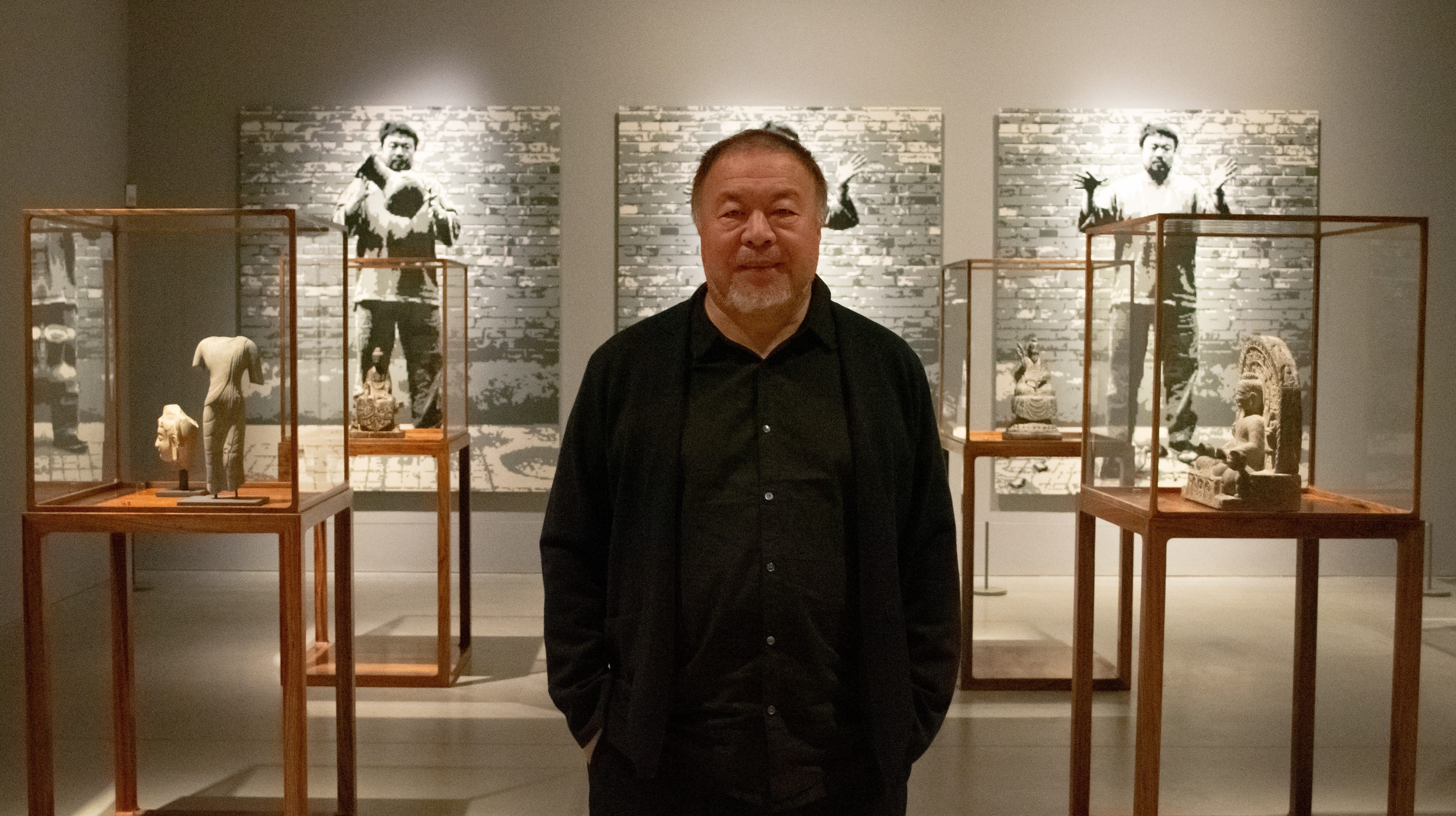
“Truth is a relative concept,” Ai Weiwei told Artnet News recently, on the occasion of the opening of “The Liberty of Doubt,” the solo exhibition that has just opened at the Kettle’s Yard in Cambridge. “What we need to keep asking is not whether certain things or events are true or not, but whether we, ourselves, are true or not.”
The Kettle’s Yard show offers a juxtaposition of 13 of Ai’s own works from the past decade with a range of antiquities that he acquired at a 2020 auction in Cambridge, where he spends a good part of his time. The exhibition also features three documentary films he has produced in recent years: Cockroach (2020), a visual record of the 2019 Hong Kong protests; Coronation (2020), which offers a glimpse into Wuhan, the epicenter of the early stage of the Covid-19 pandemic; and Human Flow (2017), which centers around the global refugee crisis.
Among the 14 artifacts on display, some are believed to be authentic antiques dating from the Northern Wei dynasty (386–534 CE) and Tang (618–907 CE), according to the artist. The rest, however, are thought by the Ai to be counterfeits or copies that were made in much later years.
Ai Weiwei, Dragon Vase (2017). Courtesy Ai Weiwei Studio.
These antique pieces, however, have not been formally examined by experts, and they are exhibited alongside Ai’s works that also play with ideas of authenticity: Marble Toilet Paper (2020), a sculpture in the shape of a soft toilet roll made of the hard marble, created in response to Covid-19 pandemic panic buying; Dragon Vase (2017), which is a near exact replica of a porcelain vase from Ming dynasty (1368–1644 CE); and Handcuffs (2011), alluding to the arrest and detention of Ai by the Chinese authorities in 2011. Ai’s Blue-and-White Porcelain Plates (2017) feature imagery that echo the scenes from the three documentary films, being screened nearby.
Left: A Chinese white marble Buddhist deity (Figure of a Bodhisattva) In Northern Wei Dynasty style. Right: A Chinese limestone Buddhist votive stele In Northern Wei Dynasty style. Photo: Vivienne Chow
“About half the works are fakes and half are real,” Ai explained. “More than 90 percent [of the exhibition-goers] cannot identify what’s real and what’s fake. Hence, doubt is important, especially in today’s political situation. There’s a tendency to erase the possibility of doubt, which is very dangerous to our development.”
But what is the truth? The artist has said that there are vast differences between the notions of truth in the Western world, which adheres to a standard of absolute truth, and that found in Chinese philosophy, which has a more fluid concept of truth. Explaining such differences to a Western audience has always been a challenge to him.
A scene from Ai Weiwei’s documentary film Cockroach (2020).
“What you see in front of you may not be true, and what appears to be unreal may not be false. I want to get people to discuss this,” said Ai, referring to his works on show, and in particular to the three documentaries that attempt to offer a glimpse into three key chapters of recent history.
“We only see fragments [of reality] because they are easier to grasp. The complete truth can often be too emotional, with too many conflicts,” he said. “The way we look at history is even more fragmented. Ninety percent of the history you learned at university is nonsense.”
That theme of challenging how we tell history permeates a number of Ai Weiwei’s recent projects, in different ways. It is present in his online initiative to raise awareness for the case of the jailed WikiLeaks founder Julian Assange (part of which will be featured in his upcoming show at Vienna’s Albertina Modern in March). And it is definitely an inspiration for his topical, political staging of the opera Turandot, which is set to open in Rome in March (even as he was opening his Cambridge show, his team was bombarding him with edited video clips connected to the production for approval).
At Kettle’s Yard show and beyond, Ai seems ready to embrace whatever mediums allow him to press his case, while also staying true to his own defiantly singular creative process. “I’m like a chef, cooking dishes depending on what I can find in the backyard,” the artist said. “I don’t care if I become an artist. I care if I can become a good craftsman, to make things with my own hands.”